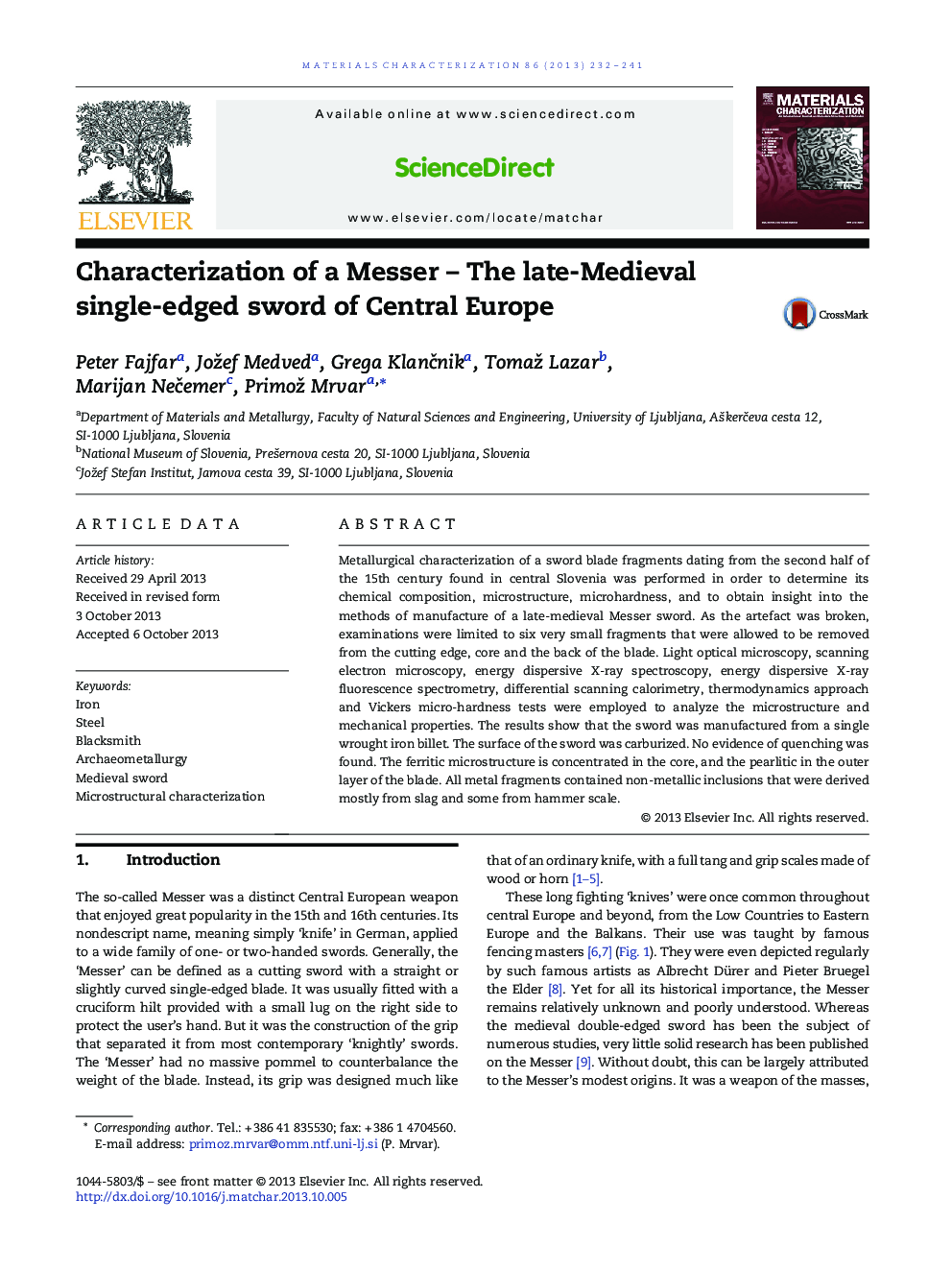| Article ID | Journal | Published Year | Pages | File Type |
|---|---|---|---|---|
| 1571184 | Materials Characterization | 2013 | 10 Pages |
Abstract
Metallurgical characterization of a sword blade fragments dating from the second half of the 15th century found in central Slovenia was performed in order to determine its chemical composition, microstructure, microhardness, and to obtain insight into the methods of manufacture of a late-medieval Messer sword. As the artefact was broken, examinations were limited to six very small fragments that were allowed to be removed from the cutting edge, core and the back of the blade. Light optical microscopy, scanning electron microscopy, energy dispersive X-ray spectroscopy, energy dispersive X-ray fluorescence spectrometry, differential scanning calorimetry, thermodynamics approach and Vickers micro-hardness tests were employed to analyze the microstructure and mechanical properties. The results show that the sword was manufactured from a single wrought iron billet. The surface of the sword was carburized. No evidence of quenching was found. The ferritic microstructure is concentrated in the core, and the pearlitic in the outer layer of the blade. All metal fragments contained non-metallic inclusions that were derived mostly from slag and some from hammer scale.
Related Topics
Physical Sciences and Engineering
Materials Science
Materials Science (General)
Authors
Peter Fajfar, Jožef Medved, Grega KlanÄnik, Tomaž Lazar, Marijan NeÄemer, Primož Mrvar,
